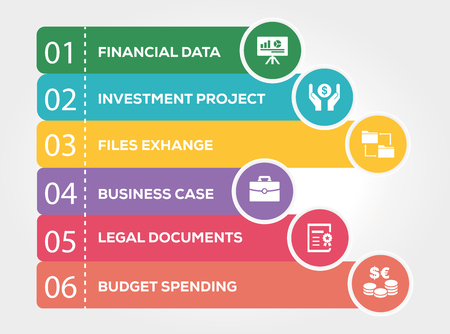1. Introduction to the 50/30/20 Rule
Managing your money doesn’t have to be complicated. The 50/30/20 rule is a simple and effective budgeting formula that helps you allocate your income wisely. Whether youre new to budgeting or looking for a straightforward way to manage your finances, this method provides a clear structure to follow.
What Is the 50/30/20 Rule?
The 50/30/20 rule is a budgeting principle that divides your after-tax income into three main categories:
| Category | Percentage of Income | Description |
|---|---|---|
| Needs | 50% | Essential expenses such as rent, utilities, groceries, insurance, and minimum debt payments. |
| Wants | 30% | Non-essential spending like dining out, entertainment, shopping, and vacations. |
| Savings & Debt Repayment | 20% | Savings, investments, emergency funds, and extra payments toward debts. |
The Origins of the 50/30/20 Rule
This budgeting rule was popularized by U.S. Senator Elizabeth Warren in her book “All Your Worth: The Ultimate Lifetime Money Plan.” She and her daughter, Amelia Warren Tyagi, introduced this framework as a way to help individuals achieve financial balance without overcomplicating their budgets.
Why Is It an Effective Budgeting Method?
(1) Simplicity and Ease of Use
The 50/30/20 rule provides a clear and easy-to-follow structure. Unlike complex budgeting systems that require tracking every single expense, this method focuses on broad categories, making it easier to maintain.
(2) Helps Prioritize Financial Goals
This rule ensures that essential expenses are covered while allowing room for personal enjoyment and future financial security. It strikes a balance between responsible spending and enjoying life.
(3) Adaptable to Different Income Levels
No matter how much you earn, the 50/30/20 rule can be applied. It offers flexibility while promoting smart financial habits.
If youre looking for a practical approach to managing your money without feeling overwhelmed, the 50/30/20 rule is an excellent place to start.
2. Breaking Down the 50/30/20 Rule
The 50/30/20 rule is a simple yet effective way to manage your money by dividing your income into three main categories: needs, wants, and savings or debt repayment. Lets break down each section to understand how this budgeting formula works.
Understanding the Allocation
Here’s how you should distribute your after-tax income:
| Category | Percentage | Description |
|---|---|---|
| Needs | 50% | Essential expenses such as housing, utilities, groceries, transportation, insurance, and minimum debt payments. |
| Wants | 30% | Non-essential spending like dining out, entertainment, shopping, subscriptions, and vacations. |
| Savings & Debt Repayment | 20% | Savings for retirement, emergency funds, investments, and paying off extra debt beyond minimum payments. |
(1) 50% for Needs
This portion covers all necessary expenses that you must pay to maintain a basic standard of living. If your essential expenses exceed 50% of your income, consider ways to reduce costs such as refinancing loans or cutting unnecessary bills.
(2) 30% for Wants
This category includes discretionary spending—things that enhance your lifestyle but arent necessary for survival. While its important to enjoy your money, being mindful of overspending in this area can help keep your budget on track.
(3) 20% for Savings and Debt Repayment
The final portion goes toward securing your financial future. This includes building an emergency fund, investing for retirement, and making extra payments on outstanding debt to reduce interest costs over time.

3. How to Apply the 50/30/20 Rule in Real Life
Understanding Your Income and Expenses
Before you start using the 50/30/20 rule, its essential to understand your income and expenses. Begin by calculating your after-tax income, which is the amount you take home after deductions like taxes, health insurance, and retirement contributions.
(1) Identify Your Needs (50%)
Your needs are essential expenses that you must cover to maintain a basic standard of living. These typically include:
- Rent or mortgage payments
- Utilities (electricity, water, internet)
- Groceries
- Insurance (health, auto, home)
- Minimum debt payments
- Transportation costs (gas, public transit)
To ensure youre within the 50% limit, track these expenses for a month and make adjustments if necessary.
(2) Allocate Your Wants (30%)
This category covers non-essential spending that improves your quality of life. Some examples include:
- Dining out and entertainment
- Streaming services and subscriptions
- Travel and vacations
- Hobbies and leisure activities
- Shopping for non-essential items
If youre exceeding 30%, consider cutting back on discretionary spending to stay within budget.
(3) Build Savings and Pay Off Debt (20%)
The final 20% should go toward financial goals such as:
- Emergency fund contributions
- Retirement savings (401(k), IRA)
- Extra debt payments (credit cards, student loans)
- Investments for future growth
If youre struggling to save 20%, start small and gradually increase your contributions.
Adjusting the Rule to Fit Your Financial Situation
The 50/30/20 rule is a great guideline, but it may need adjustments based on your income level and cost of living.
(1) High-Income Earners
If you earn a high salary, you might allocate less to needs and more toward savings or investments. Consider adjusting your percentages to prioritize wealth-building.
(2) Low-Income Earners
If your income is lower, necessities may take up more than 50%. In this case, try to cut discretionary spending or find ways to increase your earnings.
(3) Living in an Expensive Area
If you live in a high-cost city, housing may exceed 50% of your budget. Look for ways to reduce other fixed expenses or explore more affordable housing options.
Practical Tips for Sticking to the Budget
Here are some practical steps to help you successfully apply the 50/30/20 rule:
- Use Budgeting Apps: Tools like Mint or YNAB can help track your spending.
- Automate Savings: Set up automatic transfers to ensure youre saving consistently.
- Avoid Lifestyle Inflation: When your income increases, resist the urge to overspend.
- Review Monthly: Regularly assess your budget and make necessary adjustments.
The key is consistency—stick with the plan, make small improvements over time, and watch your financial stability grow.
4. Common Challenges and How to Overcome Them
Find out what obstacles people face when using the 50/30/20 rule and strategies to stay on track with your budget.
(1) Struggling to Define Needs vs. Wants
One of the biggest challenges is distinguishing between essential needs and discretionary wants. It’s easy to justify non-essential expenses as necessities.
How to Overcome It:
- Review your spending habits and categorize each expense honestly.
- Ask yourself: “Can I live without this?” If yes, it’s likely a want.
- Use budgeting apps that help classify expenses automatically.
(2) Unexpected Expenses Disrupting Your Budget
Emergencies, medical bills, or car repairs can throw off your entire budget if youre not prepared.
How to Overcome It:
- Create an emergency fund within your savings category (the 20% portion).
- Aim to save at least 3-6 months worth of living expenses.
- If an emergency arises, adjust your discretionary spending rather than dipping into necessary expenses.
(3) Income Fluctuations Make Budgeting Difficult
If you have irregular income, such as freelancing or commission-based earnings, sticking to fixed percentages can be challenging.
How to Overcome It:
- Base your budget on your average monthly income over the past six months.
- During high-income months, allocate extra funds toward savings and essentials.
- Create a buffer fund to cover low-income months without breaking your budget.
(4) Sticking to the 30% Limit for Wants
Lifestyle inflation can make it difficult to keep discretionary spending within 30% of your income.
How to Overcome It:
- Set clear spending limits for entertainment, dining out, and subscriptions.
- Use cash or prepaid cards for discretionary purchases to avoid overspending.
- If you exceed the limit one month, cut back the next month to balance it out.
(5) Not Seeing Immediate Results
The 50/30/20 rule works best over time, but some people may feel discouraged if they don’t see instant financial improvements.
How to Overcome It:
- Track progress monthly and celebrate small wins, like paying off debt or increasing savings.
- Stay consistent—budgeting is a long-term habit that pays off gradually.
- If needed, adjust your allocations slightly while keeping the core structure intact.
5. Final Thoughts: Is the 50/30/20 Rule Right for You?
The 50/30/20 rule is a simple and effective way to manage your money, but it may not be the perfect fit for everyone. Before committing to this budgeting method, its essential to weigh its advantages and limitations and consider whether it aligns with your financial situation and goals.
Pros of the 50/30/20 Rule
- Easy to Follow: The straightforward percentage-based approach makes budgeting less complicated.
- Encourages Savings: Allocating 20% of your income to savings helps build financial security.
- Balances Needs and Wants: This method ensures that you cover essentials while allowing room for discretionary spending.
- Works for Various Income Levels: Whether you earn a little or a lot, this rule provides a solid foundation for managing money.
Cons of the 50/30/20 Rule
- May Not Fit All Lifestyles: If you live in an area with high living costs, your needs may exceed 50% of your income.
- Savings Might Be Too Low: Some individuals might need to save more than 20%, especially for early retirement or large financial goals.
- No Customization: The fixed percentages don’t account for unique financial situations, such as debt repayment priorities.
Is This Budgeting Method Right for You?
Your financial situation and personal goals will determine whether the 50/30/20 rule is a good fit. Here’s a quick comparison to help you decide:
| Best For | Might Not Work For |
|---|---|
| – Beginners looking for a simple budget | – Individuals with high fixed expenses |
| – People who want balanced spending | – Those aiming for aggressive savings |
| – Anyone seeking an easy-to-follow plan | – People with significant debt obligations |
How to Adjust the Rule to Fit Your Needs
If the 50/30/20 rule doesn’t perfectly align with your lifestyle, consider making slight adjustments:
(1) Increase Savings Percentage
If your goal is early retirement or rapid wealth building, allocating more than 20% toward savings may be beneficial.
(2) Adjust Based on Cost of Living
If you live in a high-cost city, you may need to allocate more than 50% toward necessities while cutting back on wants.
(3) Prioritize Debt Repayment
If you have significant debt, you might want to dedicate a portion of your “wants” category toward paying off loans faster.
The key is to use this rule as a guideline rather than a strict requirement. By tweaking the percentages based on your personal circumstances, you can create a budget that truly works for you.


